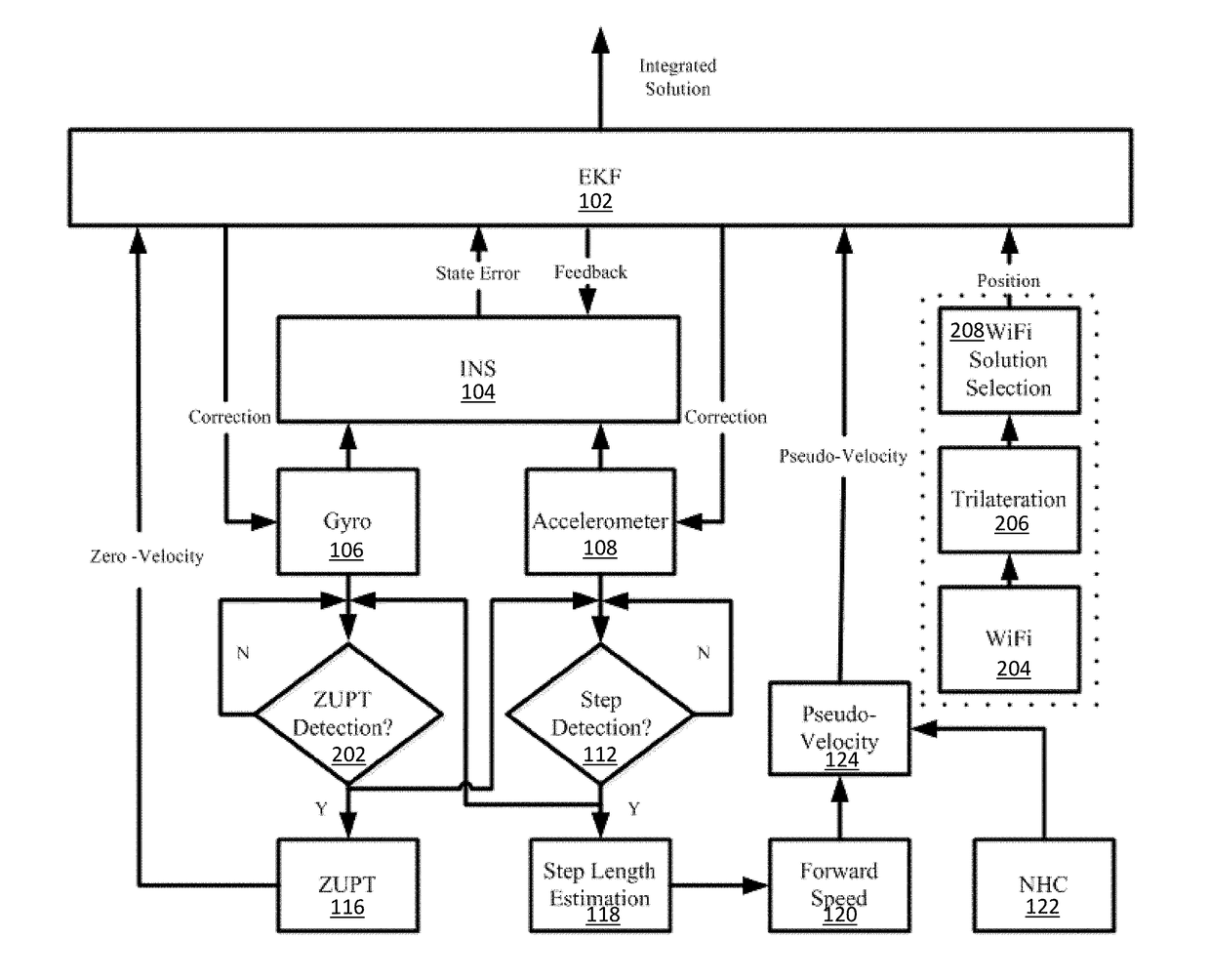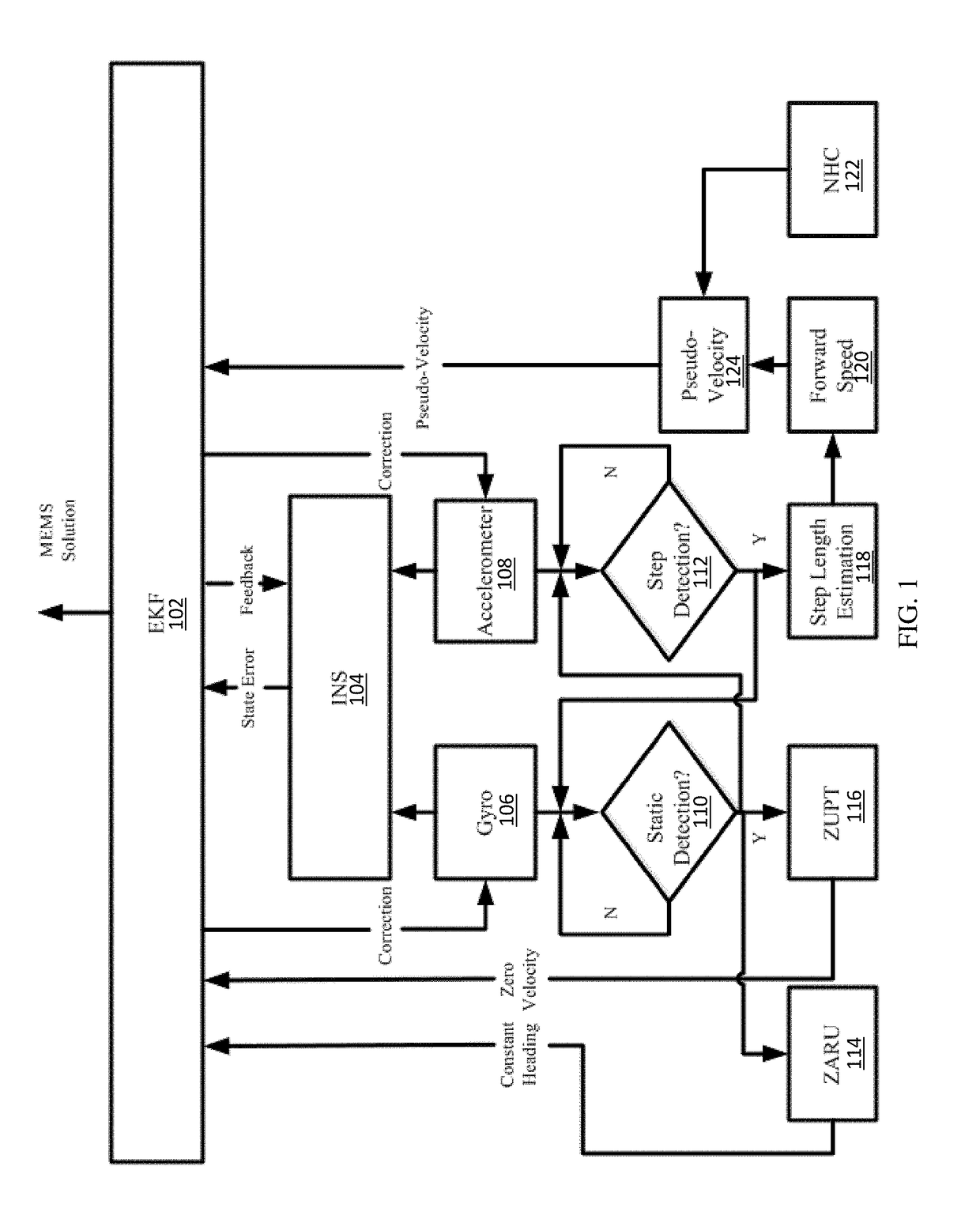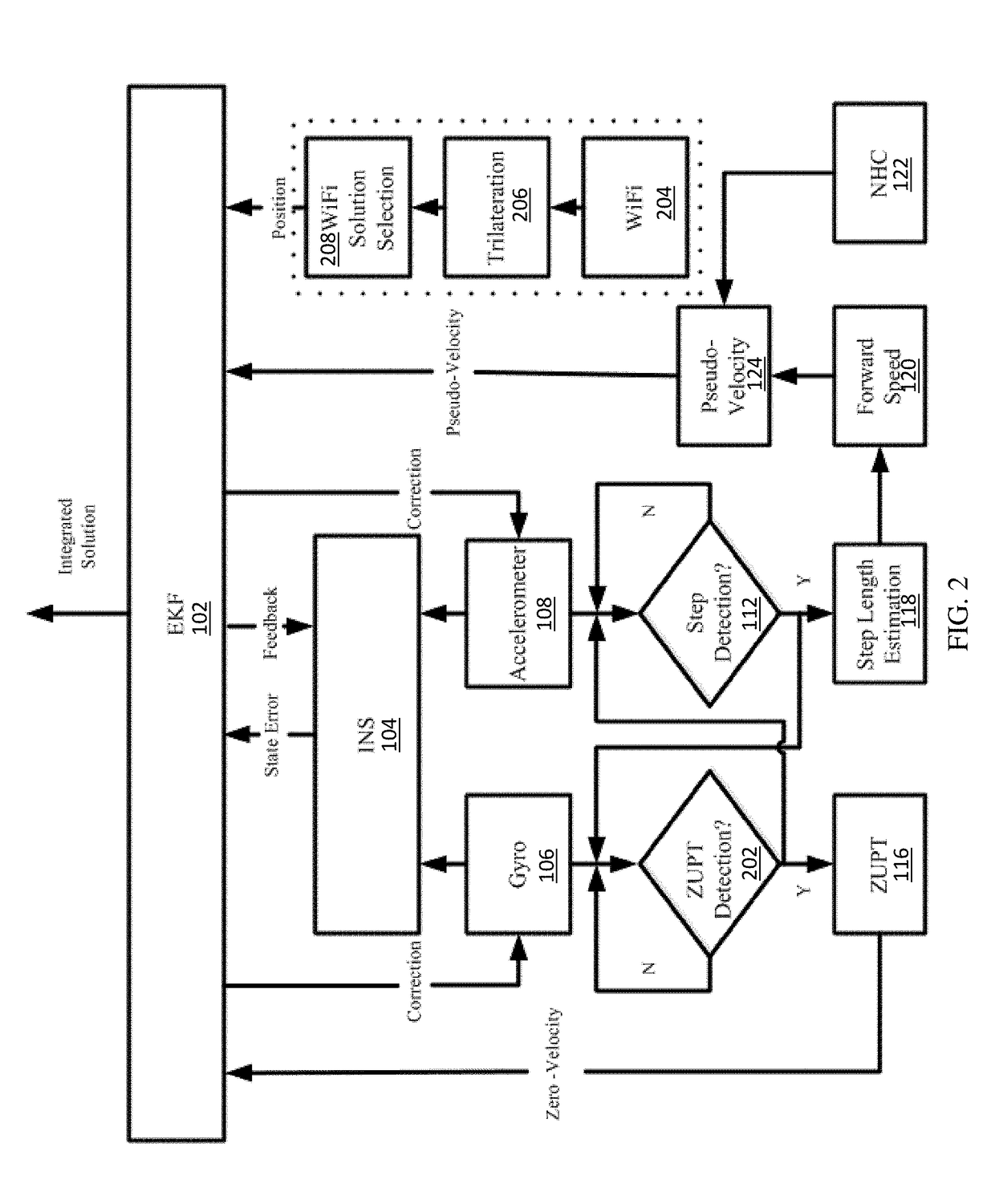Method and apparatus for enhanced pedestrian navigation based on WLAN and MEMS sensors
a technology of pedestrian navigation and mems sensor, applied in the field of navigation systems and methods, can solve the problems of increasing navigation errors by using this algorithm, gps cannot be used to achieve accurate and continuous navigation solutions in challenging areas, and the use of smart phones creates limitless possibilities for navigation and positioning applications
- Summary
- Abstract
- Description
- Claims
- Application Information
AI Technical Summary
Benefits of technology
Problems solved by technology
Method used
Image
Examples
Embodiment Construction
[0046]A pedestrian navigation is disclosed based on the integration of low-cost MEMS sensors and WLAN, which uses three approaches to enhance the navigation performance: 1) The use of the MEMS solution based on the integration of PDR and INS mechanization; 2) The use of motion constraints for the MEMS solution, such as NHC (Non-holonomic constraints), ZUPT (Zero velocity updates), and ZARU (Zero Angular Rate Updates); and 3) The use of LC / TC integrations for MEMS sensors and WLAN.
[0047]The first approach improves the MEMS-based pedestrian navigation solution through the integration of PDR and INS mechanization. The present MEMS solution combines the advantages of both schemes. In this algorithm, step detection and step length estimation are kept the same as the traditional PDR algorithm. The estimated step length is used to calculate the forward speed, which works as the velocity update for the INS mechanization to limit the velocity error, and further limit the position error and a...
PUM
 Login to View More
Login to View More Abstract
Description
Claims
Application Information
 Login to View More
Login to View More - R&D
- Intellectual Property
- Life Sciences
- Materials
- Tech Scout
- Unparalleled Data Quality
- Higher Quality Content
- 60% Fewer Hallucinations
Browse by: Latest US Patents, China's latest patents, Technical Efficacy Thesaurus, Application Domain, Technology Topic, Popular Technical Reports.
© 2025 PatSnap. All rights reserved.Legal|Privacy policy|Modern Slavery Act Transparency Statement|Sitemap|About US| Contact US: help@patsnap.com



